
Norman Percevel Rockwell was an American painter and illustrator. His works have a broad popular appeal in the United States for their reflection of the country's culture. Rockwell is most famous for the cover illustrations of everyday life he created for The Saturday Evening Post magazine over nearly five decades. Among the best-known of Rockwell's works are the Willie Gillis series, Rosie the Riveter, The Problem We All Live With, Saying Grace, and the Four Freedoms series. He is also noted for his 64-year relationship with the Boy Scouts of America (BSA), during which he produced covers for their publication Boys' Life, calendars, and other illustrations. These works include popular images that reflect the Scout Oath and Scout Law such as The Scoutmaster, A Scout Is Reverent, and A Guiding Hand.

John Trumbull was an American painter and military officer best known for his historical paintings of the American Revolutionary War, of which he was a veteran. He has been called the "Painter of the Revolution". Trumbull's Declaration of Independence (1817), one of his four paintings that hang in the United States Capitol rotunda, is used on the reverse of the current United States two-dollar bill.
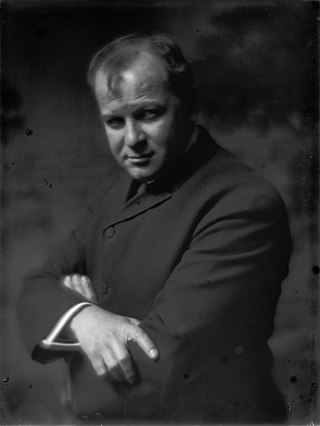
George Benjamin Luks was an American artist, identified with the aggressively realistic Ashcan School of American painting.
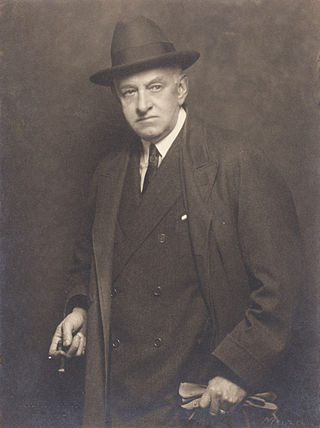
Willard Leroy Metcalf was an American painter born in Lowell, Massachusetts. He studied at the School of the Museum of Fine Arts, Boston, and later attended Académie Julian, Paris. After early figure-painting and illustration, he became prominent as a landscape painter. He was one of the Ten American Painters who in 1897 seceded from the Society of American Artists. For some years he was an instructor in the Women's Art School, Cooper Union, New York, and in the Art Students League, New York. In 1893 he became a member of the American Watercolor Society, New York. Generally associated with American Impressionism, he is also remembered for his New England landscapes and involvement with the Old Lyme Art Colony at Old Lyme, Connecticut and his influential years at the Cornish Art Colony.
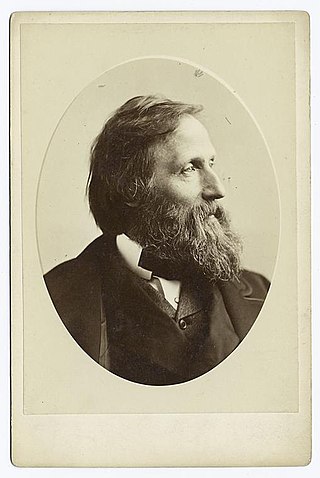
Daniel Huntington was an American artist who belonged to the art movement known as the Hudson River School and later became a prominent portrait painter.
Mark English was an American illustrator and painter, born in Hubbard, Texas. He was one of the United States' leading illustrators for publications in a career spanning from the 1960s to the 1990s, before beginning a career painting for gallery exhibition in 1995.
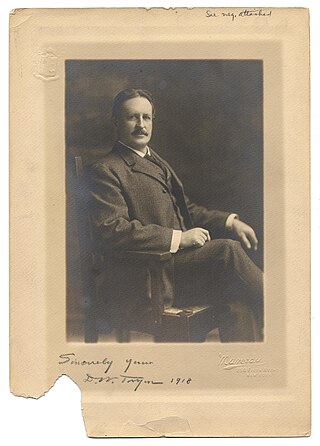
Dwight William Tryon was an American landscape painter in the late 19th and early 20th centuries. His work was influenced by James McNeill Whistler, and he is best known for his landscapes and seascapes painted in a tonalist style.

Sanford Robinson Gifford was an American landscape painter and a leading member of the second generation of Hudson River School artists. A highly-regarded practitioner of Luminism, his work was noted for its emphasis on light and soft atmospheric effects.
Burton Silverman is an American artist.
Philip Burke is an American caricature artist and illustrator, known for his vivid portraits that appeared in the pages of Rolling Stone magazine for almost a decade. Burke's work extends beyond the likes of contemporary musicians; often serving as a chronicle of the political and social undercurrent on the pages of Vanity Fair, Time, Vogue or The New Yorker and others.
Anita E. Kunz, OC, DFA, RCA is a Canadian-born artist and illustrator. She was the first woman and first Canadian to have a solo exhibit at the Library of Congress in Washington, D.C.
Tim O'Brien is an American artist who works in a realistic style. His illustrations have appeared on the covers and interior pages of magazines such as Time, Rolling Stone, GQ, Esquire, National Geographic, Der Spiegel, and others. His illustrations are also used by the US Postal Service for postage stamps.

Albert Gallatin Hoit was an American painter who lived in Boston, Massachusetts. He painted portraits of William Henry Harrison, Daniel Webster and Brenton Halliburton.
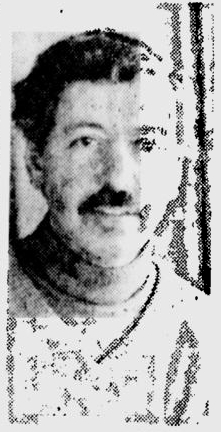
Daniel J. Robbins was an American art historian, art critic, and curator, who specialized in avant-garde 20th-century art and helped encourage the study of it. Robbins' area of scholarship was on the theoretical and philosophical origins of Cubism. His writings centered on the importance of artists such as Albert Gleizes, Jean Metzinger, Henri Le Fauconnier and Jacques Villon. He was a specialist in early Modernism, writing on Salon Cubists and championed contemporaries such as Louise Bourgeois and the Color Field painters. Art historian Peter Brooke referred to Robbins as "the great pioneer of the broader history of Cubism".
Charles Edward Chambers was an American illustrator and classical painter. He is most-known for his Chesterfield cigarettes advertisements and Steinway & Sons portraits that ran during the early 1900s. Chambers also illustrated stories for writers W. Somerset Maugham and Pearl S. Buck, among others. These appeared in various magazines including, Cosmopolitan, Harper's, and Redbook.

John La Gatta, also spelled LaGatta, was an advertising illustrator active during the first half of the 20th century.

Portraits of Courage: A Commander in Chief's Tribute to America's Warriors is a book published in 2017 that includes a collection of oil paintings and stories about military veterans by former U.S. President George W. Bush.
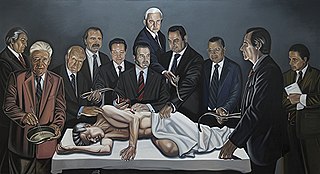
The 'Finger-Assisted' Nephrectomy of Professor Nadey Hakim and the World Presidents of the International College of Surgeons in Chicago, or, The Wise in Examination of the Torn Contemporary State is a painting by British artist Henry Ward depicting transplant surgeon Nadey Hakim demonstrating the removal of a living donor kidney. It is on display at Başkent University, Ankara, Turkey.

Edmund Stuart Bittinger, better known by Ned Bittinger, is an American portrait painter and illustrator who is known for his paintings of prominent American figures. His notable works include the congressional portraits of Abraham Lincoln and Lindy Boggs for the United States Capitol, as well as Secretaries of State James Baker and Lawrence Eagleburger's official State Department portraits. He has also painted official portraits of Henry Kissinger, John Mica, and Jon Corzine, among others.
Robert Alexander Anderson is an American portrait artist known for painting the official portraits of George W. Bush and Alan Greenspan as well as designing United States postage stamps.














